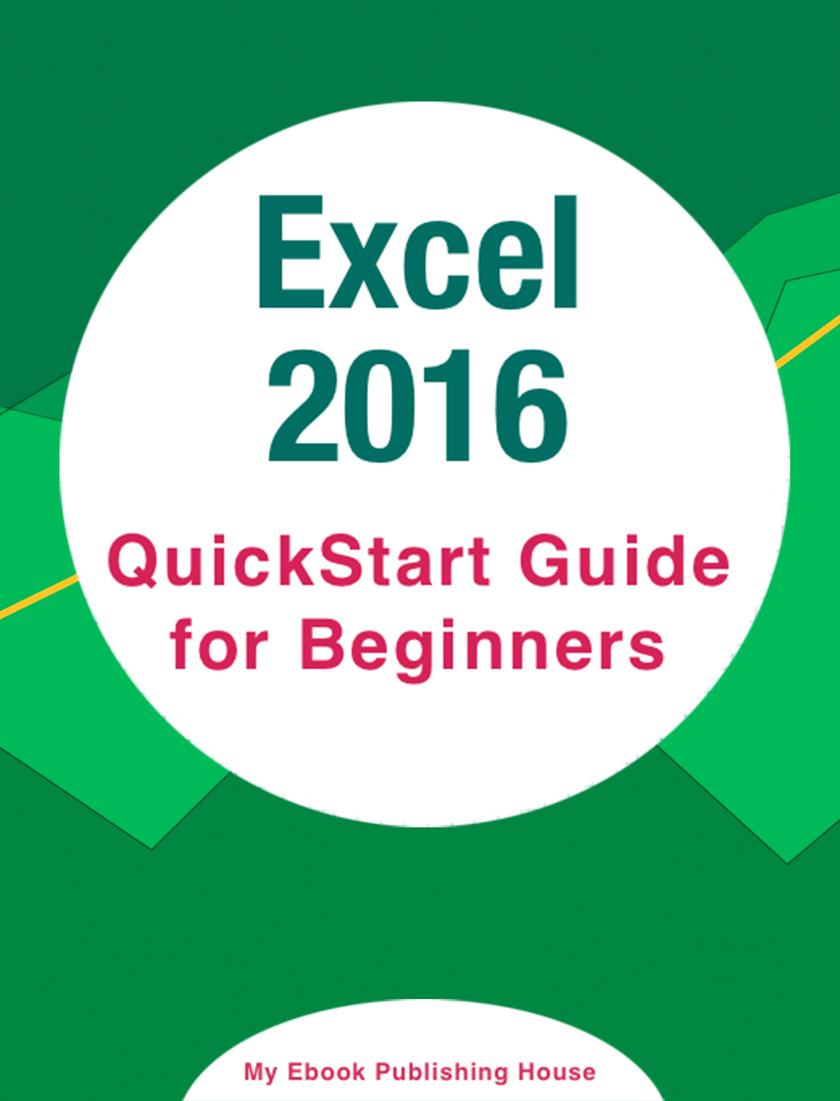
Excel 2016: QuickStart Guide for Beginners
¥24.44
Excel 2016: QuickStart Guide for Beginners
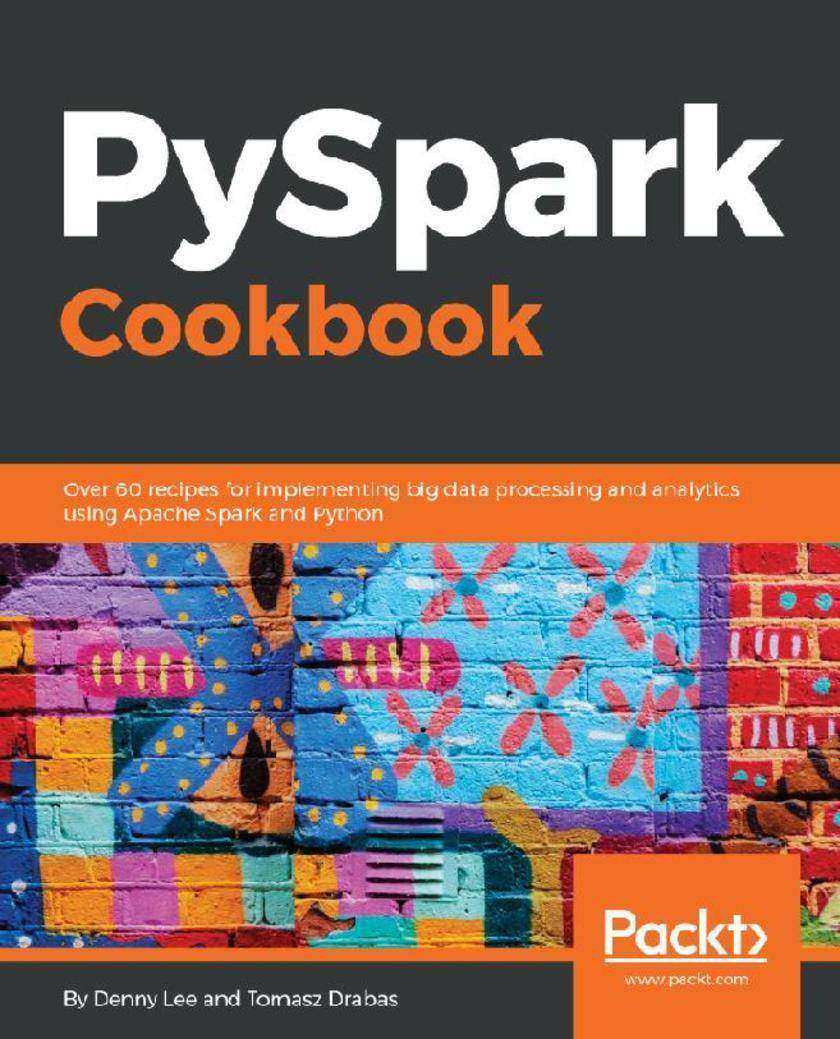
PySpark Cookbook
¥73.02
Combine the power of Apache Spark and Python to build effective big data applications About This Book ? Perform effective data processing, machine learning, and analytics using PySpark ? Overcome challenges in developing and deploying Spark solutions using Python ? Explore recipes for efficiently combining Python and Apache Spark to process data Who This Book Is For The PySpark Cookbook is for you if you are a Python developer looking for hands-on recipes for using the Apache Spark 2.x ecosystem in the best possible way. A thorough understanding of Python (and some familiarity with Spark) will help you get the best out of the book. What You Will Learn ? Configure a local instance of PySpark in a virtual environment ? Install and configure Jupyter in local and multi-node environments ? Create DataFrames from JSON and a dictionary using pyspark.sql ? Explore regression and clustering models available in the ML module ? Use DataFrames to transform data used for modeling ? Connect to PubNub and perform aggregations on streams In Detail Apache Spark is an open source framework for efficient cluster computing with a strong interface for data parallelism and fault tolerance. The PySpark Cookbook presents effective and time-saving recipes for leveraging the power of Python and putting it to use in the Spark ecosystem. You’ll start by learning the Apache Spark architecture and how to set up a Python environment for Spark. You’ll then get familiar with the modules available in PySpark and start using them effortlessly. In addition to this, you’ll discover how to abstract data with RDDs and DataFrames, and understand the streaming capabilities of PySpark. You’ll then move on to using ML and MLlib in order to solve any problems related to the machine learning capabilities of PySpark and use GraphFrames to solve graph-processing problems. Finally, you will explore how to deploy your applications to the cloud using the spark-submit command. By the end of this book, you will be able to use the Python API for Apache Spark to solve any problems associated with building data-intensive applications. Style and approach This book is a rich collection of recipes that will come in handy when you are working with PySpark Addressing your common and not-so-common pain points, this is a book that you must have on the shelf.
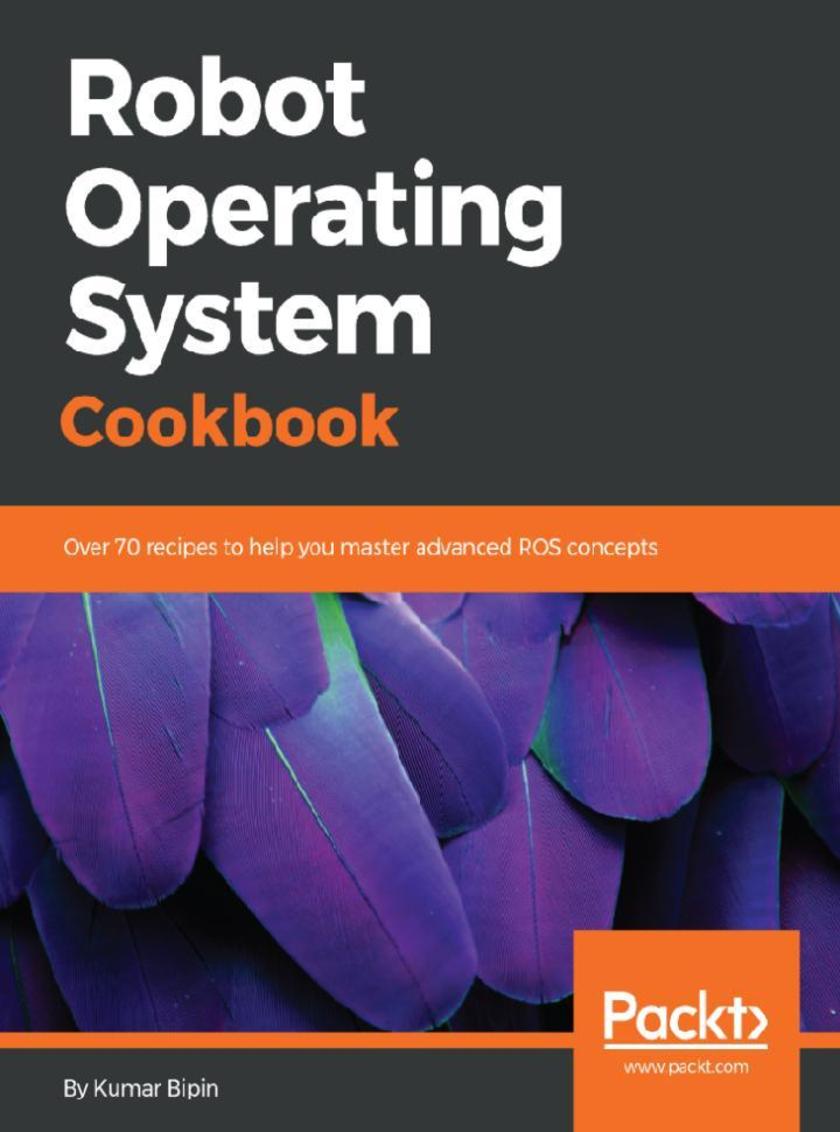
Robot Operating System Cookbook
¥81.74
Leverage the power of ROS to build exciting collaborative robots. About This Book ? Delve into an open source, meta-operating system for your robot ? Get acquainted with tools and libraries for building and running code on multiple platforms ? Use Gazebo to model your robot and create a virtual environment Who This Book Is For If you’re a researcher or engineer with an interest in the problems, solutions, and future research issues that you may encounter in the development of robotic applications, this book is for you. Basic knowledge of C++ and Python programming with the GNU/Linux environment is strongly recommended to assist with understanding the key concepts covered in the book. What You Will Learn ? Explore advanced concepts, such as ROS pluginlib, nodelets, and actionlib ? Work with ROS visualization, profiling, and debugging tools ? Gain experience in robot modeling and simulation using Gazebo ? Understand the ROS Navigation Stack for mobile robots ? Configure a MoveIt! package for a manipulator robot ? Develop an autonomous navigation framework for MAV using ORB SLAM and MoveIt ? Integrate sensors, actuators, and robots into the ROS ecosystem ? Get acquainted with the ROS-Industrial package with hardware support, capabilities, and applications In Detail This book will leverage the power of ROS with an introduction to its core and advanced concepts through exciting recipes. You will get acquainted with the use of different synchronous and asynchronous communication methods, including messages, services, and actions. You will learn how to use the various debugging and visualization tools used in development and how to interface sensors and actuators with the ROS framework. Firstly, you will get to grips with ROS simulation frameworks, such as Gazebo and RotorS for modeling and simulating any physical robot and virtual environment. You will also cover mobile robotics, micro-aerial vehicles, and robotic arms, which are the leading branches of robotic applications. Robot Operating System Cookbook will also guide you in the development of an autonomous navigation framework for both mobile robots and micro-aerial vehicles. Finally, you will explore ROS-Industrial, an open source project that extends the advanced capabilities of ROS software to manufacturing industries. Style and approach The goal of this book is to provide an integrated overview of the concepts and techniques. ROS is not an operating system in the traditional sense of process management and scheduling; rather, it provides a structured communications layer above the host operating systems of a heterogeneous compute cluster.
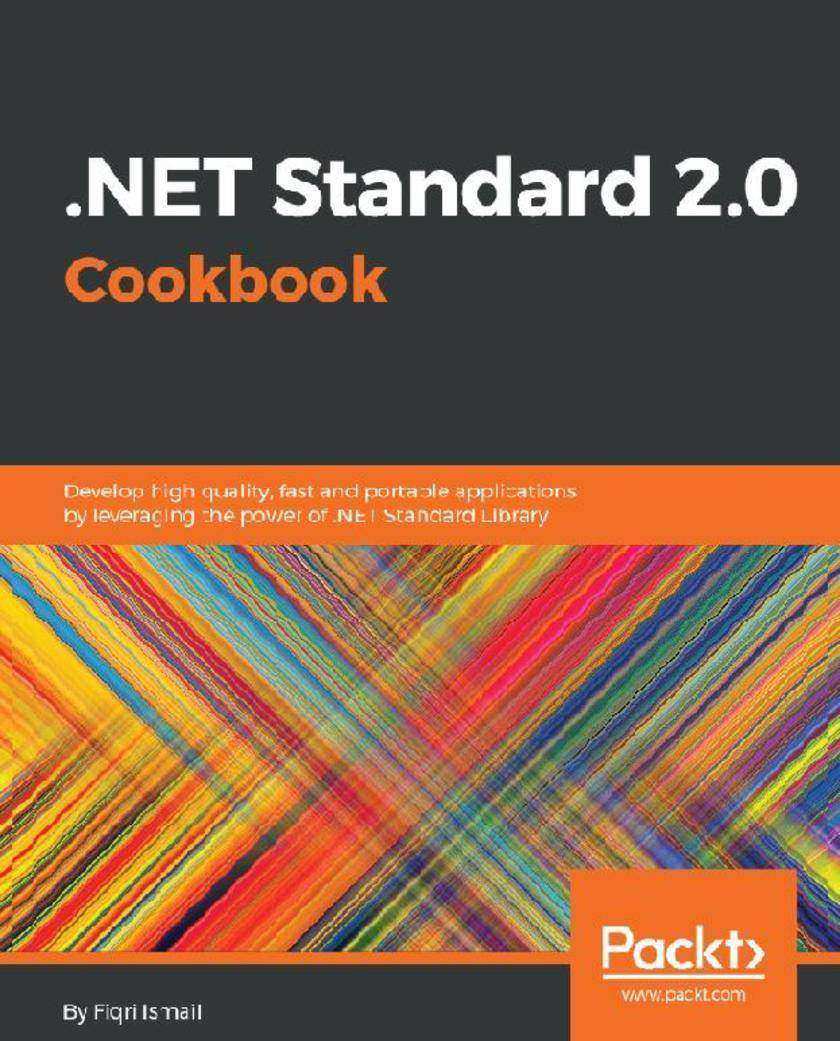
.NET Standard 2.0 Cookbook
¥90.46
Get the most out of .NET framework using standard libraries and create a .NET Standard 2.0 library from scratch About This Book ? Write code once and share within .NET ecosystem in Windows, Linux and macOS ? Give your .NET Libraries a common framework in cloud and on premise with the latest .NET Standard 2.0 ? Build a wide range of applications from Mobile with Xamarin to Web with ASP.NET Who This Book Is For This book is for .NET developers who are looking to build dynamic applications with the latest .NET Standard. C# knowledge is required. What You Will Learn ? Create a .NET Standard 2.0 library ? Use System.IO within the .NET Standard 2.0 ? Make use of your legacy .NET libraries with the new .NET Core standard ? Explore the thread support to create a multithreaded .NET Standard 2.0 library ? Create a .NET Standard 2.0 library and use it with an Android and iOS application ? Implement various Visual Studio 2017 diagnostics and debugging tools ? Create a NuGet Package and submit the package to the NuGet Package Manager ? Use Visual Studio 2017 azure tools to deploy the application to Azure ? Test and deliver a .NET Standard 2.0 library In Detail The .NET Standard is a standard that represents a set of APIs that all .NET platforms have to implement, making it easy for developers to access and use one common library for their development needs. This book begins with a quick refresher, helping you understand the mechanics of the new standard and offering insight into how it works. You’ll explore the core library concepts, such as working with collections, configurations, I/O, security, and multithreading. You’ll explore the iOS and Android libraries of Xamarin and we’ll guide you through creating a .NET Standard 2.0 library, which you’ll use with both Android and iOS applications. In the final chapters, you’ll learn the various debugging and diagnostics tools to deliver quality libraries and create a NuGet package of the .NET Standard 2.0 library. By the end of this book, you’ll be able to expand your current workflow to various .NET flavors and have the essential skills to create a .NET Standard 2.0 library from scratch to package and deliver it to the world. Style and approach A recipe-based approach to help you get the most out of the .NET Standard 2.0 Library that can be implemented to all the .NET Platforms
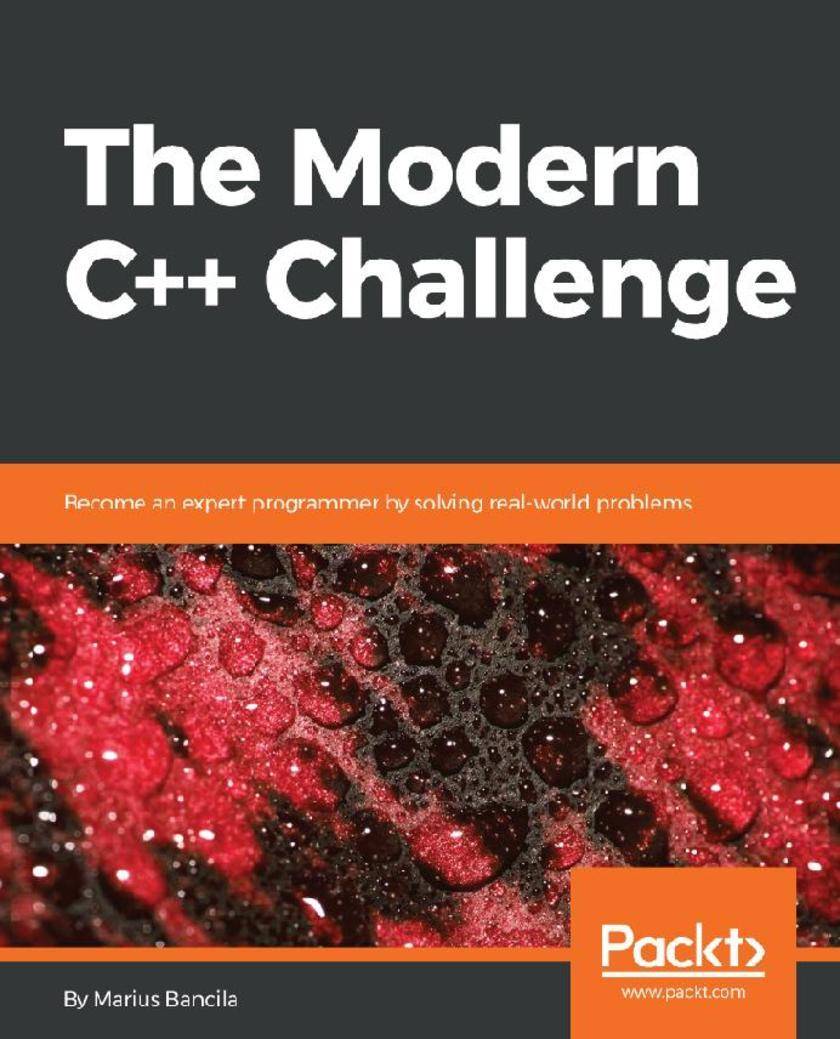
The Modern C++ Challenge
¥63.21
Test your C++ programming skills by solving real-world programming problems covered in the book About This Book ? Solve a variety of real-world programming and logic problems by leveraging the power of C++17 ? Test your skills in using language features, algorithms, data structures, design patterns, and more ? Explore areas such as cryptography, communication, and image handling in C++ Who This Book Is For This book will appeal to C++ developers of all levels. There's a challenge inside for everyone. What You Will Learn ? Serialize and deserialize JSON and XML data ? Perform encryption and signing to facilitate secure communication between parties ? Embed and use SQLite databases in your applications ? Use threads and asynchronous functions to implement generic purpose parallel algorithms ? Compress and decompress files to/from a ZIP archive ? Implement data structures such as circular buffer and priority queue ? Implement general purpose algorithms as well as algorithms that solve specific problems ? Create client-server applications that communicate over TCP/IP ? Consume HTTP REST services ? Use design patterns to solve real-world problems In Detail C++ is one of the most widely-used programming languages and has applications in a variety of fields, such as gaming, GUI programming, and operating systems, to name a few. Through the years, C++ has evolved into (and remains) one of the top choices for software developers worldwide. This book will show you some notable C++ features and how to implement them to meet your application needs. Each problem is unique and doesn't just test your knowledge of the language; it tests your ability to think out of the box and come up with the best solutions. With varying levels of difficulty, you'll be faced with a wide variety of challenges. And in case you're stumped, you don't have to worry: we've got the best solutions to the problems in the book. So are you up for the challenge? Style and approach A recipe-based approach where each problem is solved with the help of step by step instructions.
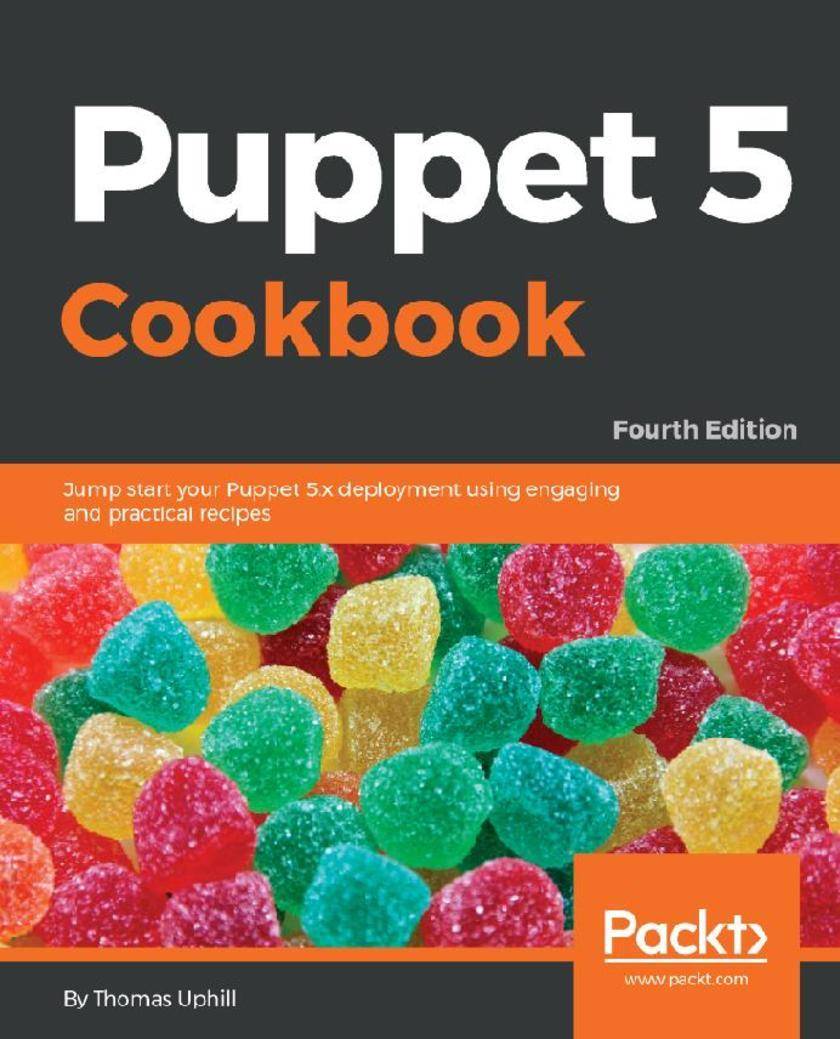
Puppet 5 Cookbook
¥81.74
Write custom plugins for Puppet, including facts, providers, and functions About This Book ? Grasp recipes that work with centralized and decentralized deployments ? Explore language differences and enhancements anticipated in Puppet version 5.x ? Gain expert understanding of Puppet's latest and most advanced features Who This Book Is For Puppet 5 Cookbook is for anyone who builds and administers servers, especially in a web operations context. You’ll need some experience of Linux systems administration, including familiarity with the command line, filesystem, and text editing. No prior programming experience is required. What You Will Learn ? Discover the latest and most advanced features of Puppet ? Bootstrap your Puppet installation using powerful tools like Rake ? Master techniques to deal with centralized and decentralized Puppet deployments ? Use exported resources and forge modules to set up Puppet modules ? Create efficient manifests to streamline your deployments ? Automate Puppet master deployment using Git hooks and PuppetDB ? Make Puppet reliable, performant, and scalable In Detail Puppet is a configuration management system that automates all your IT configurations, giving you control of managing each node.Puppet 5 Cookbook will take you through Puppet's latest and most advanced features, including Docker containers, Hiera, and AWS Cloud Orchestration. Updated with the latest advancements and best practices, this book delves into various aspects of writing good Puppet code, which includes using Puppet community style, checking your manifests with puppet-lint, and learning community best practices with an emphasis on real-world implementation. You will learn to set up, install, and create your first manifests with Puppet version control, and also understand various sysadmin tasks, including managing config files, using Augeas, and generating files from snippets and templates. As the book progresses, you’ll explore virtual resources and use Puppet's resource scheduling and auditing features. In the concluding chapters, you’ll walk through managing applications and writing your own resource types, providers, and external node classifiers. By the end of this book, you will have learned to report, log, and debug your system. Style and approach A recipe-based guide filled with quick step-by-step instructions that are immediately applicable
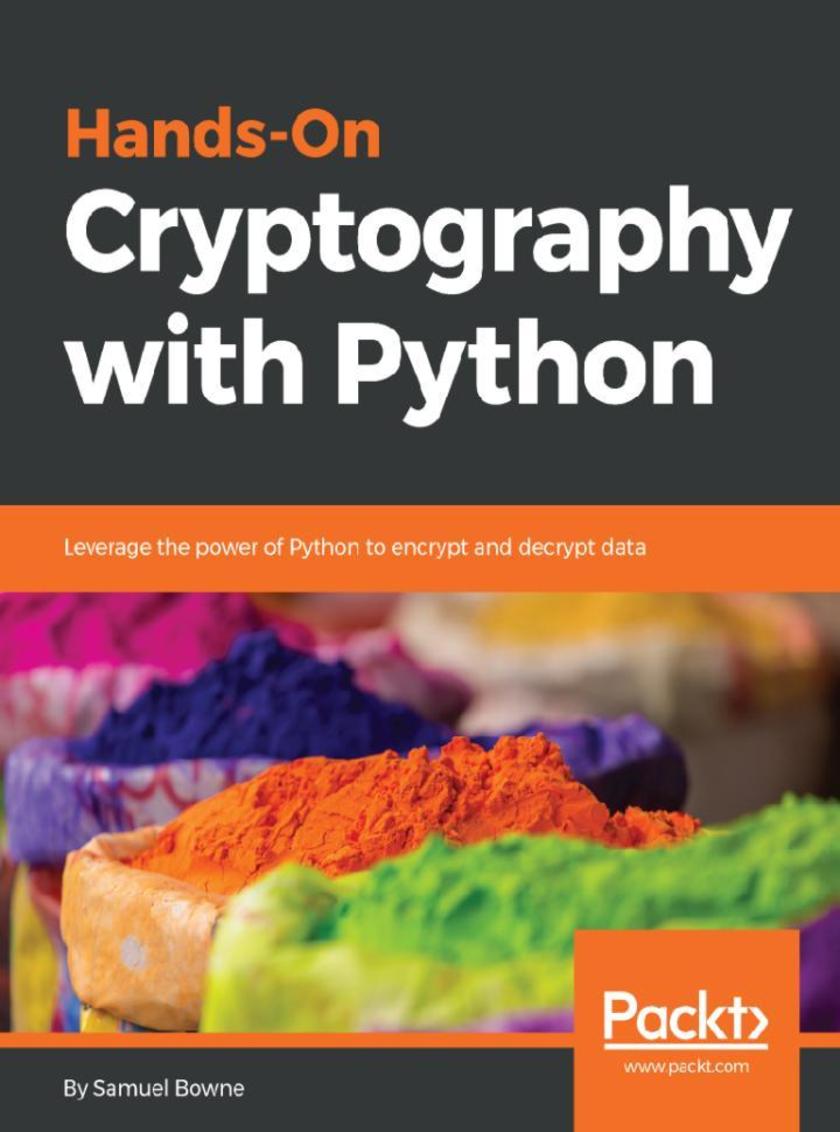
Hands-On Cryptography with Python
¥54.49
Learn to evaluate and compare data encryption methods and attack cryptographic systems About This Book ? Explore popular and important cryptographic methods ? Compare cryptographic modes and understand their limitations ? Learn to perform attacks on cryptographic systems Who This Book Is For Hands-On Cryptography with Python is for security professionals who want to learn to encrypt and evaluate data, and compare different encryption methods. What You Will Learn ? Protect data with encryption and hashing ? Explore and compare various encryption methods ? Encrypt data using the Caesar Cipher technique ? Make hashes and crack them ? Learn how to use three NIST-recommended systems: AES, SHA, and RSA ? Understand common errors in encryption and exploit them In Detail Cryptography is essential for protecting sensitive information, but it is often performed inadequately or incorrectly. Hands-On Cryptography with Python starts by showing you how to encrypt and evaluate your data. The book will then walk you through various data encryption methods,such as obfuscation, hashing, and strong encryption, and will show how you can attack cryptographic systems. You will learn how to create hashes, crack them, and will understand why they are so different from each other. In the concluding chapters, you will use three NIST-recommended systems: the Advanced Encryption Standard (AES), the Secure Hash Algorithm (SHA), and the Rivest-Shamir-Adleman (RSA). By the end of this book, you will be able to deal with common errors in encryption. Style and approach A practical guide that will help the readers to encrypt their data with ease
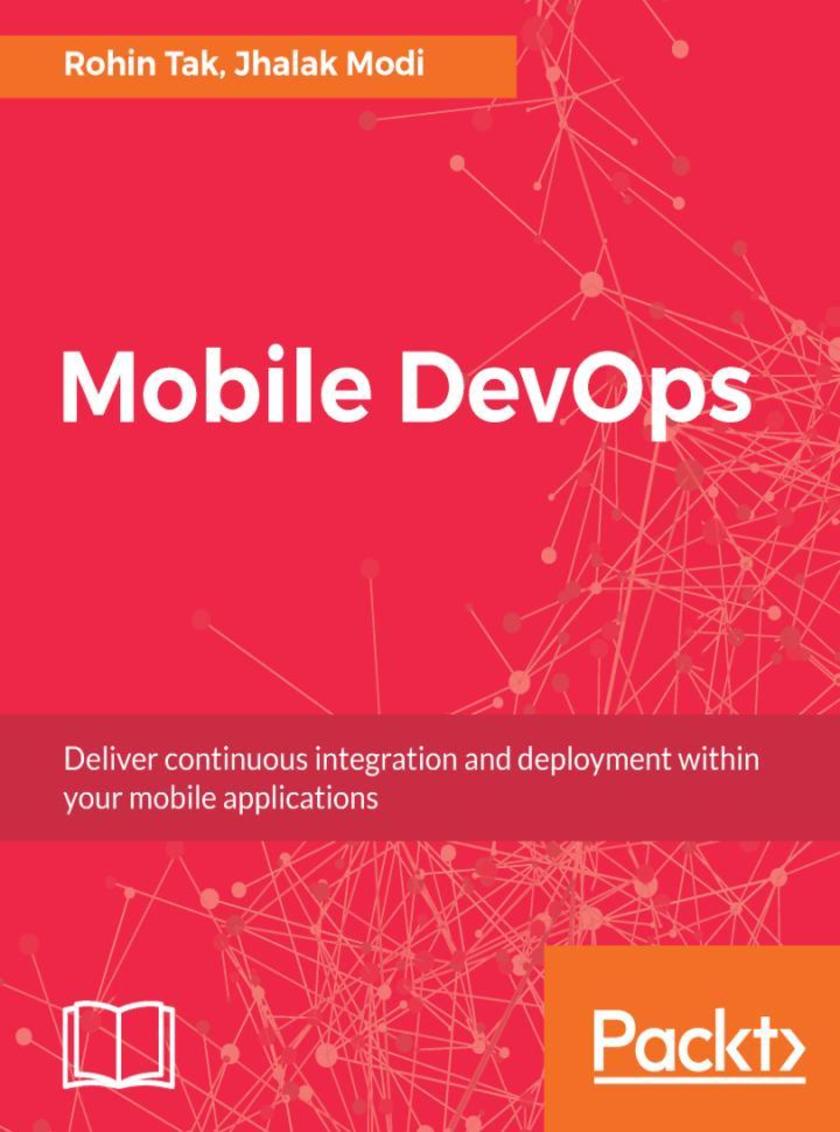
Mobile DevOps
¥81.74
This step-by-step guide will teach you to continuously improve your mobile application development process About This Book ? Efficiently deliver continuous integration and deployment within all the stages of your application's lifecycle ? Learn to implement mobile DevOps with Xamarin and Visual Studio ? Deliver high quality and performing mobile applications Who This Book Is For If you are a programmer and developer who wants to increase the efficiency and scalability of your mobile application with the implementation of DevOps, then this book is for you. You need basic experience of the application process development. What You Will Learn ? Become fluent with the basic components of Mobile Devops ? Find out how to use code repositories and install Git on an EC2 server and manage users and groups ? Set up an Android device for development and install Visual Studio and Xamarin on Windows ? Create an Android project and UI for applications ? Add permissions to Android Manifest ? Write tests with Xamarin. UI and test using test cloud to check it on multiple devices ? Monitor and optimize the application using the Android monitoring tool ? Debug the mobile application and improve its efficiency In Detail Today's world is all about perfection, and there are hundreds of applications that are released each day out of which only a few succeed. Making sure that the app looks, performs, and behaves as expected is one of the biggest challenge developers face today. The main goal of this book is to teach developers to implement DevOps to build, test, and deliver. This book will teach you to implement Mobile DevOps at every stage of your application's lifecycle with Visual Studio and Xamarin Mobile Lifecycle solutions. Later, it will also show you how to leverage Mobile Center's continuous integration and automated testing to develop a high-quality applications. Next, you’ll see how to mobilize your on-premises data to the cloud and increase your productivity with code reuse. Finally, you’ll discover how to find and fix bugs beforehand, improving the efficiency of your application while it is being developed. By the end of this book, you will be well-versed with Mobile DevOps techniques, delivering high quality and high performance mobile apps. Style and approach This clear, concise, and straightforward book will make you aware of mobile applications by showing you Devops fundamentals such as building, testing, and delivery. This book has been created to help you put new ideas into practice, and demonstrate precisely what's possible with mobile Devops.
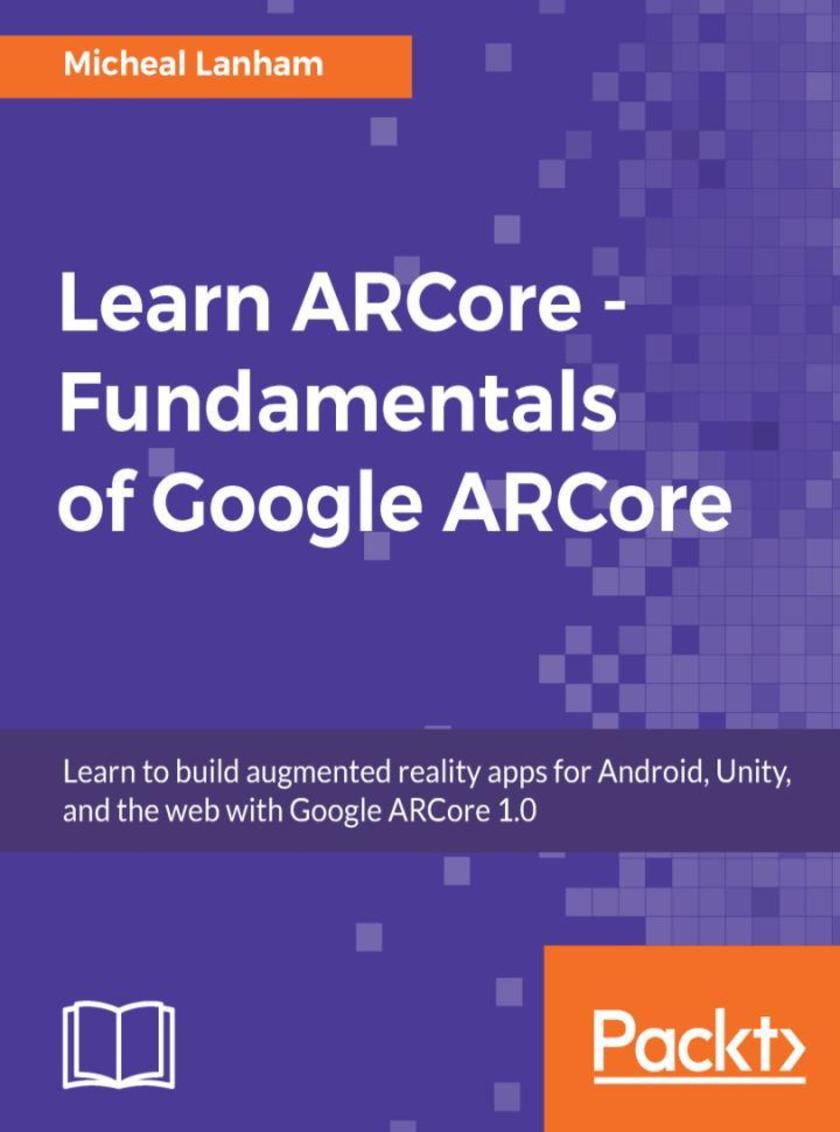
Learn ARCore - Fundamentals of Google ARCore
¥73.02
Create next-generation Augmented Reality and Mixed Reality apps with the latest version of Google ARCore About This Book ? Harness the power of the Google’s new augmented reality (AR) platform ARCore to build cutting-edge Augmented reality apps ? Learn core concepts of Environmental Understanding, Immersive Computing, and Motion Tracking with ARCore ? Extend your application by combining ARCore with OpenGL, Machine Learning and more. Who This Book Is For This book is for web and mobile developers who have broad programming knowledge on Java or JavaScript or C# and want to develop Augmented Reality applications with Google ArCore. To follow this book no prior experience with AR development, 3D, or 3D math experience is needed. What You Will Learn ? Build and deploy your Augmented Reality app to the Android, Web, and Unity platforms ? Implement ARCore to identify and visualize objects as point clouds, planes, surfaces, and/or meshes ? Explore advanced concepts of environmental understanding using Google ARCore and OpenGL ES with Java ? Create light levels from ARCore and create a C# script to watch and propagate lighting changes in a scene ? Develop graphics shaders that react to changes in lighting and map the environment to place objects in Unity/C# ? Integrate motion tracking with the Web ARCore API and Google Street View to create a combined AR/VR experience In Detail Are you a mobile developer or web developer who wants to create immersive and cool Augmented Reality apps with the latest Google ARCore platform? If so, this book will help you jump right into developing with ARCore and will help you create a step by step AR app easily. This book will teach you how to implement the core features of ARCore starting from the fundamentals of 3D rendering to more advanced concepts such as lighting, shaders, Machine Learning, and others. We’ll begin with the basics of building a project on three platforms: web, Android, and Unity. Next, we’ll go through the ARCore concepts of motion tracking, environmental understanding, and light estimation. For each core concept, you’ll work on a practical project to use and extend the ARCore feature, from learning the basics of 3D rendering and lighting to exploring more advanced concepts. You’ll write custom shaders to light virtual objects in AR, then build a neural network to recognize the environment and explore even grander applications by using ARCore in mixed reality. At the end of the book, you’ll see how to implement motion tracking and environment learning, create animations and sounds, generate virtual characters, and simulate them on your screen. Style and approach Practical examples that will take you through the basics of ARcore and teach you how to build an app using it.
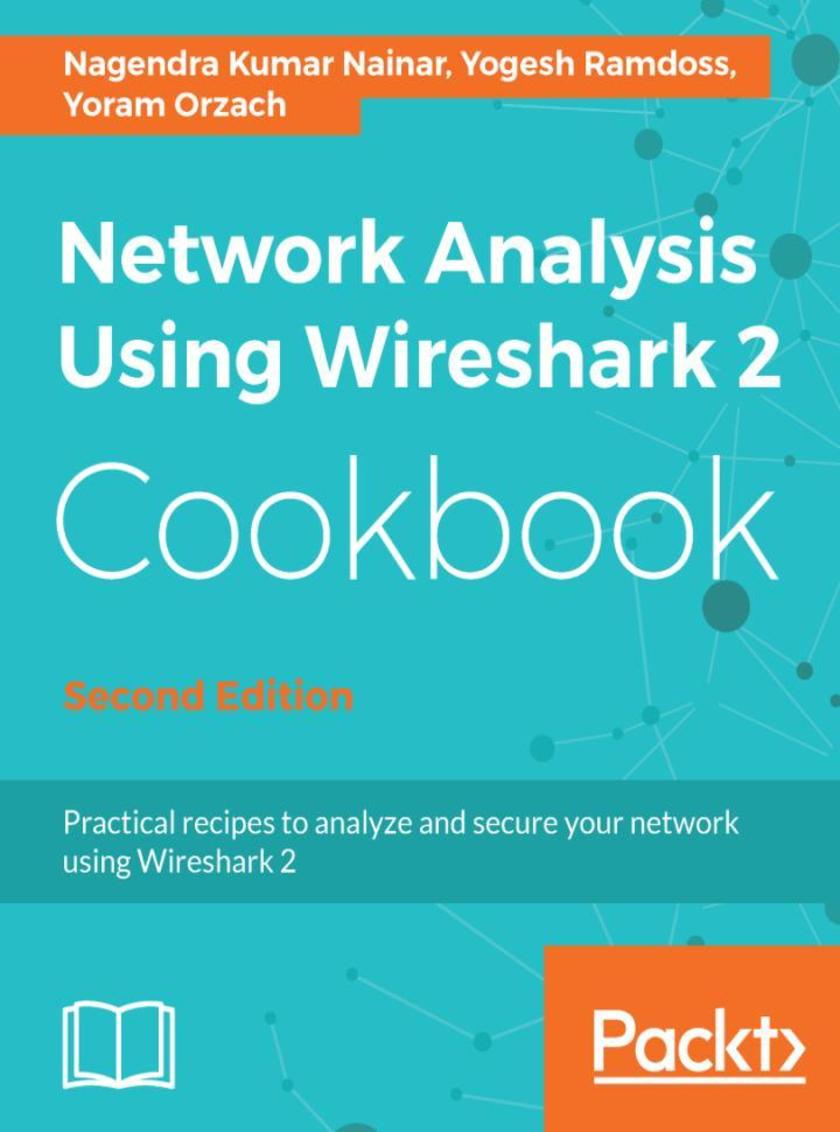
Network Analysis Using Wireshark 2 Cookbook - Second Edition
¥90.46
Over 100 recipes to analyze and troubleshoot network problems using Wireshark 2 About This Book ? Place Wireshark 2 in your network and configure it for effective network analysis ? Deep dive into the enhanced functionalities of Wireshark 2 and protect your network with ease ? A practical guide with exciting recipes on a widely used network protocol analyzer Who This Book Is For This book is for security professionals, network administrators, R&D, engineering and technical support, and communications managers who are using Wireshark for network analysis and troubleshooting. It requires a basic understanding of networking concepts, but does not require specific and detailed technical knowledge of protocols or vendor implementations. What You Will Learn ? Configure Wireshark 2 for effective network analysis and troubleshooting ? Set up various display and capture filters ? Understand networking layers, including IPv4 and IPv6 analysis ? Explore performance issues in TCP/IP ? Get to know about Wi-Fi testing and how to resolve problems related to wireless LANs ? Get information about network phenomena, events, and errors ? Locate faults in detecting security failures and breaches in networks In Detail This book contains practical recipes on troubleshooting a data communications network. This second version of the book focuses on Wireshark 2, which has already gained a lot of traction due to the enhanced features that it offers to users. The book expands on some of the subjects explored in the first version, including TCP performance, network security, Wireless LAN, and how to use Wireshark for cloud and virtual system monitoring. You will learn how to analyze end-to-end IPv4 and IPv6 connectivity failures for Unicast and Multicast traffic using Wireshark. It also includes Wireshark capture files so that you can practice what you’ve learned in the book. You will understand the normal operation of E-mail protocols and learn how to use Wireshark for basic analysis and troubleshooting. Using Wireshark, you will be able to resolve and troubleshoot common applications that are used in an enterprise network, like NetBIOS and SMB protocols. Finally, you will also be able to measure network parameters, check for network problems caused by them, and solve them effectively. By the end of this book, you’ll know how to analyze traffic, find patterns of various offending traffic, and secure your network from them. Style and approach This book consists of practical recipes on Wireshark 2 that target novices as well as intermediate Wireshark users. It goes deep into the technical issues, covers additional protocols, and many more real-live examples so that you are able to implement it in your daily life scenarios.
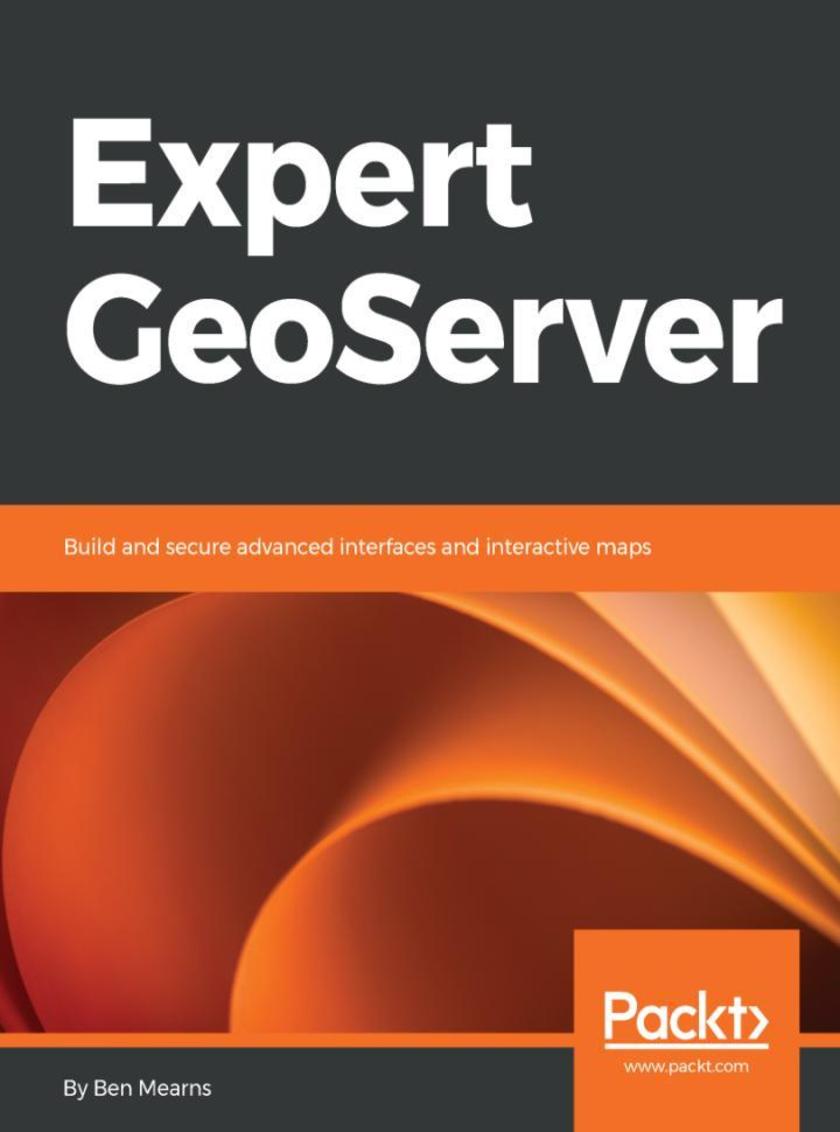
Expert GeoServer
¥52.31
Explore TensorFlow's capabilities to perform efficient deep learning on images Key Features *Discover image processing for machine vision *Build an effective image classification system using the power of CNNs *Leverage TensorFlow’s capabilities to perform efficient deep learning Book Description TensorFlow is Google’s popular offering for machine learning and deep learning, quickly becoming a favorite tool for performing fast, efficient, and accurate deep learning tasks. Hands-On Deep Learning for Images with TensorFlow shows you the practical implementations of real-world projects, teaching you how to leverage TensorFlow’s capabilities to perform efficient image processing using the power of deep learning. With the help of this book, you will get to grips with the different paradigms of performing deep learning such as deep neural nets and convolutional neural networks, followed by understanding how they can be implemented using TensorFlow. By the end of this book, you will have mastered all the concepts of deep learning and their implementation with TensorFlow and Keras. What you will learn *Build machine learning models particularly focused on the MNIST digits *Work with Docker and Keras to build an image classifier *Understand natural language models to process text and images *Prepare your dataset for machine learning *Create classical, convolutional, and deep neural networks *Create a RESTful image classification server Who this book is for Hands-On Deep Learning for Images with TensorFlow is for you if you are an application developer, data scientist, or machine learning practitioner looking to integrate machine learning into application software and master deep learning by implementing practical projects in TensorFlow. Knowledge of Python programming and basics of deep learning are required to get the best out of this book.
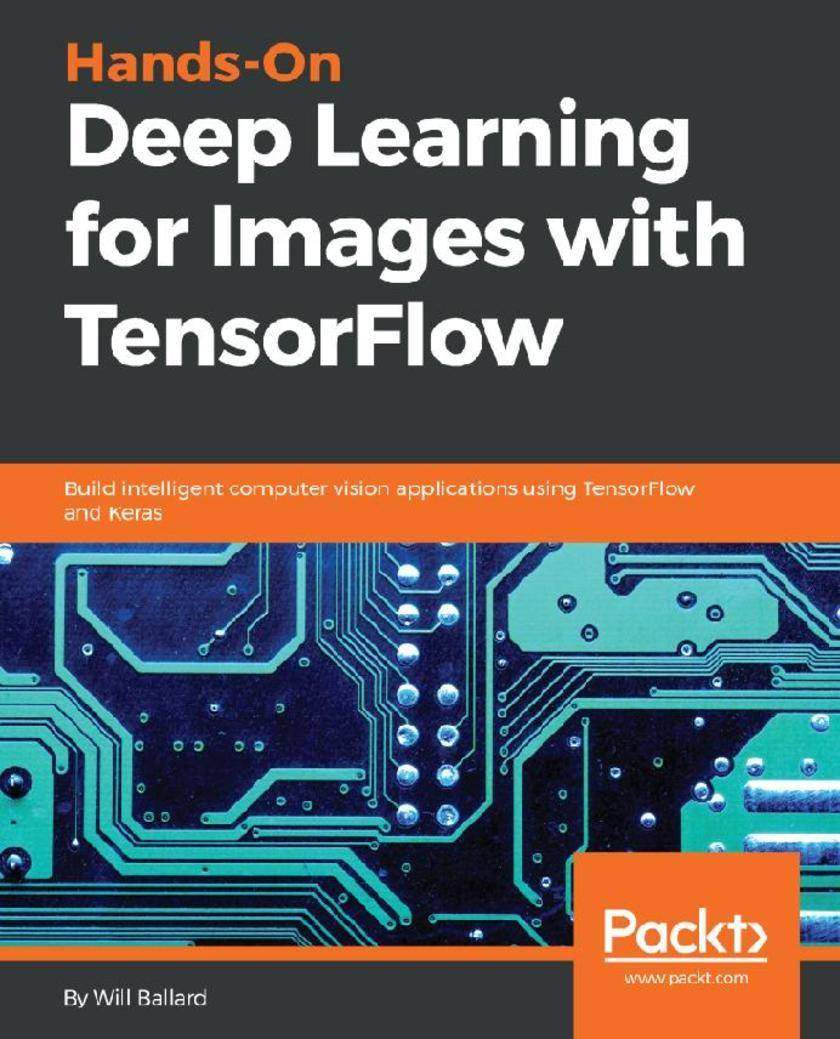
Hands-On Deep Learning for Images with TensorFlow
¥43.59
Build modern, fast, and progressive web applications using modern features of PHP 7 and TypeScript Key Features *Explore the latest features of Angular and Laravel to build applications that are powerful, consistent, and maintainable *Develop modern user interfaces with a reusable component-based architecture using Angular 6 and Bootstrap 4 *Learn how to build secure backend APIs with Laravel Book Description Angular, considered as one of the most popular and powerful frontend frameworks, has undergone a major overhaul to embrace emerging web technologies so that developers can build cutting-edge web applications. This book gives you practical knowledge of building modern full-stack web apps from scratch using Angular with a Laravel Restful back end. The book begins with a thorough introduction to Laravel and Angular and its core concepts like custom errors messages, components, routers, and Angular-cli, with each concept being explained first, and then put into practice in the case-study project. With the basics covered, you will learn how sophisticated UI features can be added using NgBootstrao and a component-based architecture. You will learn to extend and customize variables from Bootstrap CSS framework. You will learn how to create secure web application with Angular and Laravel using token based authentication. Finally, you will learn all about progressive web applications and build and deploy a complete fullstack application using Docker and Docker-compose. By the end of this book, you'll gain a solid understanding of Angular 6 and how it interacts with a Laravel 5.x backend What you will learn *Explore the core features of Angular 6 to create sophisticated user interfaces *Use Laravel 5 to its full extent to create a versatile backend layer based on RESTful APIs *Configure a web application in order to accept user-defined data and persist it into the database using server-side APIs *Build an off-line-first application using service-worker and manifest file *Deal with token based authentication on single page application (SPA). *Secure your application against threats and vulnerabilities in a time efficient way *Deploy using Docker and Docker-compose Who this book is for This book targets developers who are new to Angular, Laravel, or both, and are seeking a practical, best-practice approach to development with these technologies. They must have some knowledge of HTML, CSS and JavaScript. Familiarity of PHP is assumed to get the most from this book.
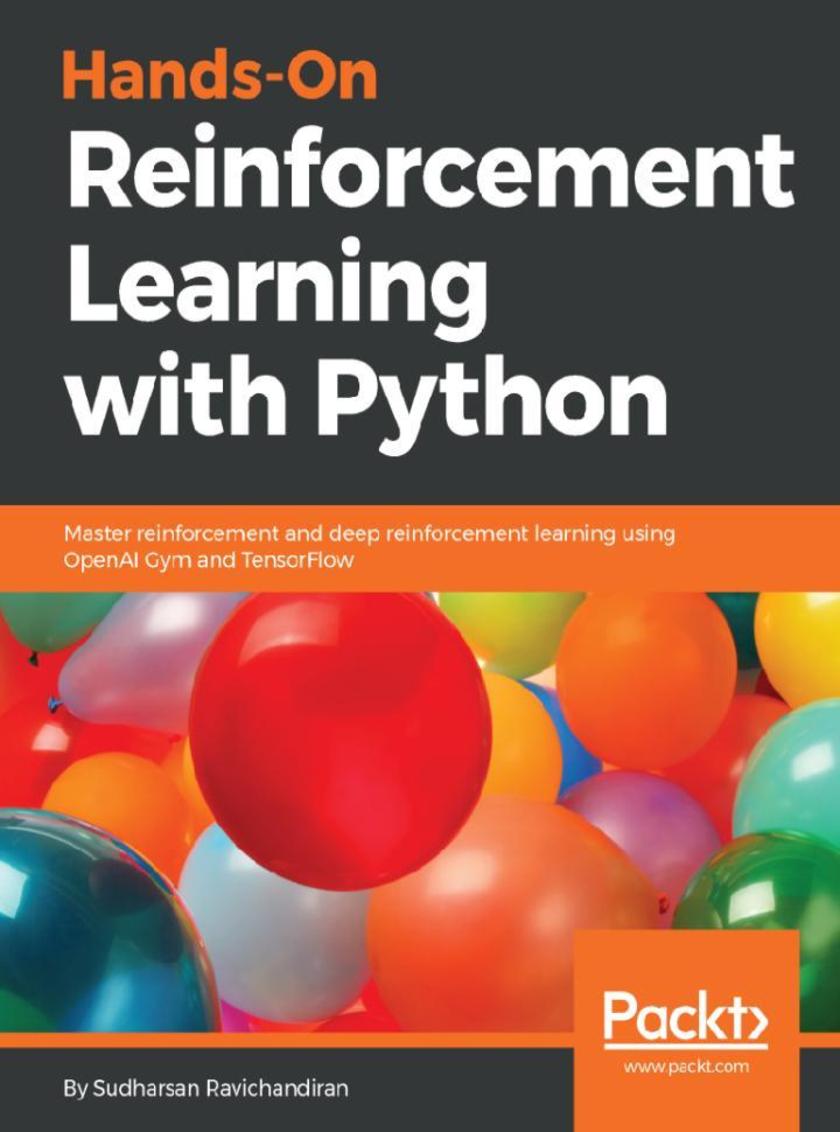
Hands-On Reinforcement Learning with Python
¥63.21
A hands-on guide enriched with examples to master deep reinforcement learning algorithms with Python About This Book ? Your entry point into the world of artificial intelligence using the power of Python ? An example-rich guide to master various RL and DRL algorithms ? Explore various state-of-the-art architectures along with math Who This Book Is For If you’re a machine learning developer or deep learning enthusiast interested in artificial intelligence and want to learn about reinforcement learning from scratch, this book is for you. Some knowledge of linear algebra, calculus, and the Python programming language will help you understand the concepts covered in this book. What You Will Learn ? Understand the basics of reinforcement learning methods, algorithms, and elements ? Train an agent to walk using OpenAI Gym and Tensorflow ? Understand the Markov Decision Process, Bellman’s optimality, and TD learning ? Solve multi-armed-bandit problems using various algorithms ? Master deep learning algorithms, such as RNN, LSTM, and CNN with applications ? Build intelligent agents using the DRQN algorithm to play the Doom game ? Teach agents to play the Lunar Lander game using DDPG ? Train an agent to win a car racing game using dueling DQN In Detail Reinforcement Learning (RL) is the trending and most promising branch of artificial intelligence. Hands-On Reinforcement learning with Python will help you master not only the basic reinforcement learning algorithms but also the advanced deep reinforcement learning algorithms. The book starts with an introduction to Reinforcement Learning followed by OpenAI Gym, and TensorFlow. You will then explore various RL algorithms and concepts, such as Markov Decision Process, Monte Carlo methods, and dynamic programming, including value and policy iteration. This example-rich guide will introduce you to deep reinforcement learning algorithms, such as Dueling DQN, DRQN, A3C, PPO, and TRPO. You will also learn about imagination-augmented agents, learning from human preference, DQfD, HER, and many more of the recent advancements in reinforcement learning. By the end of the book, you will have all the knowledge and experience needed to implement reinforcement learning and deep reinforcement learning in your projects, and you will be all set to enter the world of artificial intelligence. Style and approach This is a hands-on book designed to further expand your machine learning skills by understanding reinforcement to deep reinforcement learning algorithms with applications in Python.
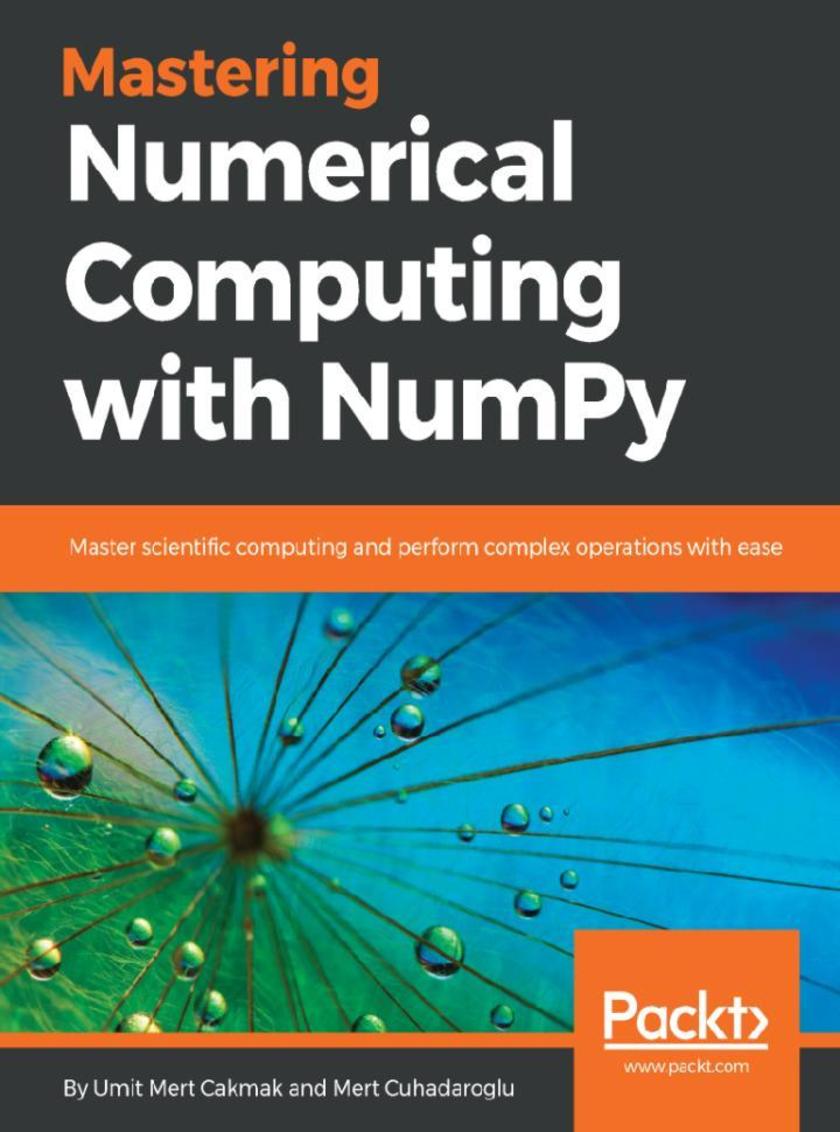
Mastering Numerical Computing with NumPy
¥63.21
Enhance the power of NumPy and start boosting your scientific computing capabilities About This Book ? Grasp all aspects of numerical computing and understand NumPy ? Explore examples to learn exploratory data analysis (EDA), regression, and clustering ? Access NumPy libraries and use performance benchmarking to select the right tool Who This Book Is For Mastering Numerical Computing with NumPy is for you if you are a Python programmer, data analyst, data engineer, or a data science enthusiast, who wants to master the intricacies of NumPy and build solutions for your numeric and scientific computational problems. You are expected to have familiarity with mathematics to get the most out of this book. What You Will Learn ? Perform vector and matrix operations using NumPy ? Perform exploratory data analysis (EDA) on US housing data ? Develop a predictive model using simple and multiple linear regression ? Understand unsupervised learning and clustering algorithms with practical use cases ? Write better NumPy code and implement the algorithms from scratch ? Perform benchmark tests to choose the best configuration for your system In Detail NumPy is one of the most important scientific computing libraries available for Python. Mastering Numerical Computing with NumPy teaches you how to achieve expert level competency to perform complex operations, with in-depth coverage of advanced concepts. Beginning with NumPy's arrays and functions, you will familiarize yourself with linear algebra concepts to perform vector and matrix math operations. You will thoroughly understand and practice data processing, exploratory data analysis (EDA), and predictive modeling. You will then move on to working on practical examples which will teach you how to use NumPy statistics in order to explore US housing data and develop a predictive model using simple and multiple linear regression techniques. Once you have got to grips with the basics, you will explore unsupervised learning and clustering algorithms, followed by understanding how to write better NumPy code while keeping advanced considerations in mind. The book also demonstrates the use of different high-performance numerical computing libraries and their relationship with NumPy. You will study how to benchmark the performance of different configurations and choose the best for your system. By the end of this book, you will have become an expert in handling and performing complex data manipulations. Style and approach This mastering guide will help you master your skills required to perform a complex numerical computation. The book contains the right mixture of theory and practical examples that will help you in dealing with the advanced NumPy and build solutions for your numeric and scientific computational problems
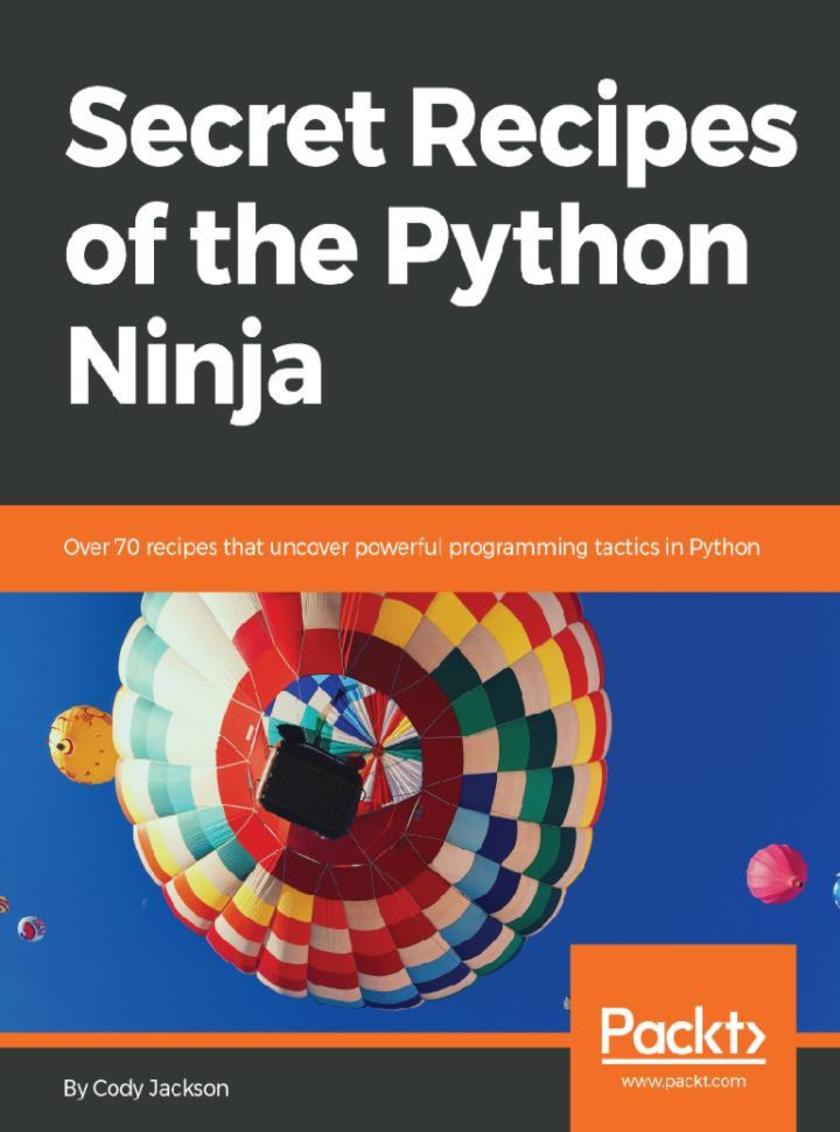
Secret Recipes of the Python Ninja
¥90.46
Test your Python programming skills by solving real-world problems About This Book ? Access built-in documentation tools and improve your code. ? Discover how to make the best use of decorator and generator functions ? Enhance speed and improve concurrency by conjuring tricks from the PyPy project Who This Book Is For Whether you’ve been working with Python for a few years or you’re a seasoned programmer, you’ll have a lot of new tricks to walk away with. What You Will Learn ? Know the differences between .py and .pyc files ? Explore the different ways to install and upgrade Python packages ? Understand the working of the PyPI module that enhances built-in decorators ? See how coroutines are different from generators and how they can simulate multithreading ? Grasp how the decimal module improves floating point numbers and their operations ? Standardize sub interpreters to improve concurrency ? Discover Python’s built-in docstring analyzer In Detail This book covers the unexplored secrets of Python, delve into its depths, and uncover its mysteries. You’ll unearth secrets related to the implementation of the standard library, by looking at how modules actually work. You’ll understand the implementation of collections, decimals, and fraction modules. If you haven’t used decorators, coroutines, and generator functions much before, as you make your way through the recipes, you’ll learn what you’ve been missing out on. We’ll cover internal special methods in detail, so you understand what they are and how they can be used to improve the engineering decisions you make. Next, you’ll explore the CPython interpreter, which is a treasure trove of secret hacks that not many programmers are aware of. We’ll take you through the depths of the PyPy project, where you’ll come across several exciting ways that you can improve speed and concurrency. Finally, we’ll take time to explore the PEPs of the latest versions to discover some interesting hacks. Style and approach Recipe based approach where each problem is solved with the help of step by step instructions.
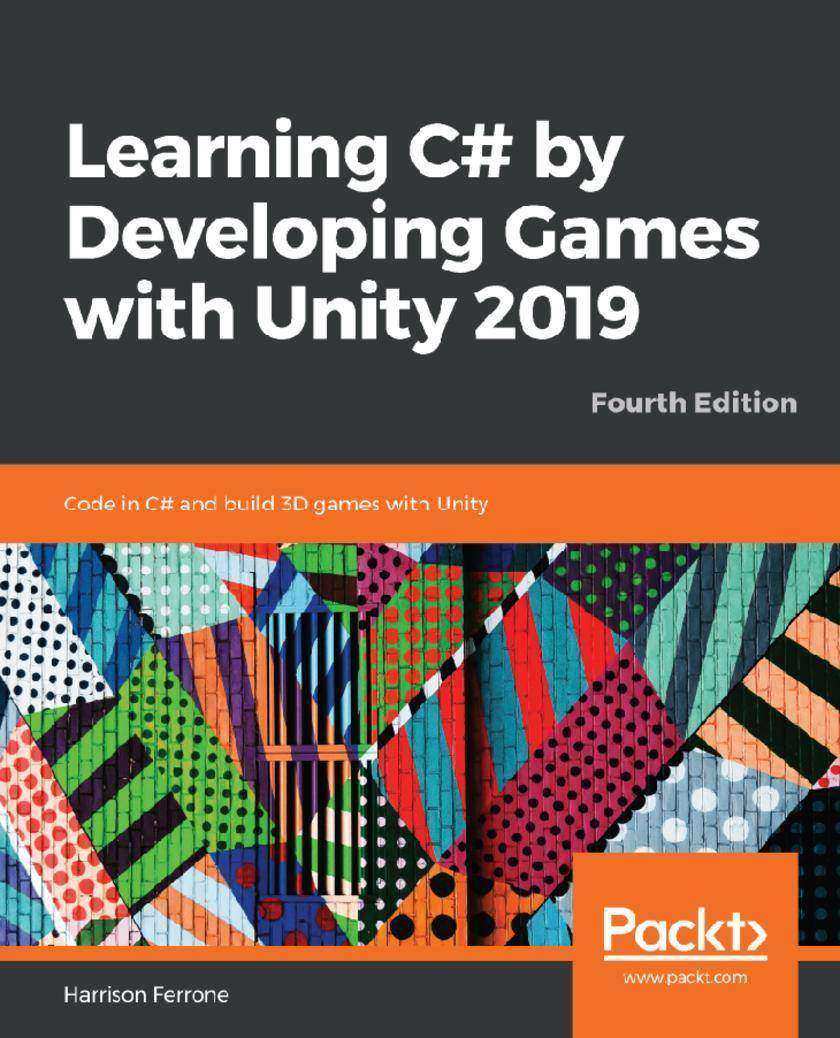
Learning C# by Developing Games with Unity 2019
¥73.02
Understand the fundamentals of C# programming and get started with coding from ground up in an engaging and practical manner Key Features * Beginner's guide to getting started with software development concepts from a macro level * Leverage the power of the latest C# in solving the complex programming problems * Learn to script and customize your 3D games and implement animation techniques to make them engaging Book Description Learning to program in today’s technical landscape can be a daunting task, especially when faced with the sheer number of languages you have to choose from. Luckily, Learning C# with Unity 2019 removes the guesswork and starts you off on the path to becoming a confident, and competent, programmer using game development with Unity. You’ll start off small by learning the building blocks of programming, from variables, methods, and conditional statements to classes and object-oriented systems. After you have the basics under your belt you’ll explore the Unity interface, creating C# scripts, and translating your newfound knowledge into simple game mechanics. Throughout this journey, you’ll get hands-on experience with programming best practices and macro-level topics such as manager classes and flexible application architecture. By the end of the book, you’ll be familiar with intermediate C# topics like generics, delegates, and events, setting you up to take on projects of your own. What you will learn * Understand programming fundamentals with practice examples in C# * Explore the interface and features of Unity 2019 * Learn C# programming syntax from scratch * Create a game design document and prototype level * Explore intermediate programming topics and best practices * Implement game mechanics, interactions, and UI elements with C# Who this book is for The book caters to developers and programmers who want to get started with C# programming in a fun and engaging manner. Anyone who wants to build games and script in C# language and Unity can take this book up. No prior programming or Unity experience is required.
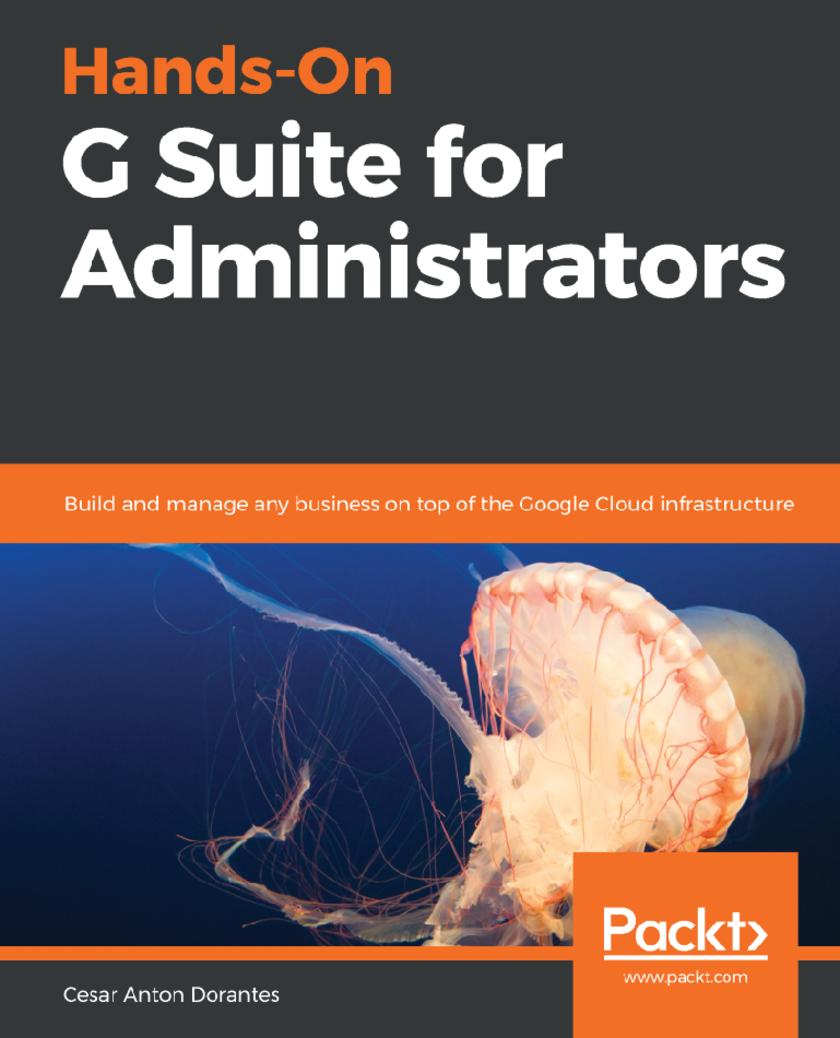
Hands-On G Suite for Administrators
¥73.02
Effectively implement and administer business solutions on any scale in a cost-effective way to have a competitive advantage using Gsuite Key Features * Enhance administration with Admin console and Google Apps Script * Prepare for the G suite certification using the concepts in the book * Learn how to use reports to monitor, troubleshoot and optimize G Suite Book Description Hands-On G Suite for Administrators is a comprehensive hands-on guide to G Suite Administration that will prepare you with all you need to know to become a certified G Suite Administrator, ready to handle all the business scales, from a small office to a large enterprise. You will start by learning the main features, tools, and services from G Suite for Business and then, you will explore all it has to offer and the best practices, so you can make the most out of it. We will explore G Suite tools in depth so you and your team get everything you need -combination of tools, settings and practices- to succeed in an intuitive, safe and collaborative way. While learning G Suite tools you will also learn how to use Google Sites and App Maker, to create from your corporate site to internal tools, live reports that seamlessly integrate with live documents, and advanced Google Services. Finally, you will learn how to set up, analyze and enforce Security, Privacy for your business and how to efficiently troubleshoot a wide variety of issues. What you will learn * Setting up G Suite for the business account * Work with the advanced setup of additional business domains and administrate users in multiple * Explore Guite's extensive set of features to cover your team’s creation and collaboration needs * Setup, manage and analyze your security to prevent, find or fix any security problem in G Suite * Manage Mobile devices and integrate with third-party apps * Create cloud documents, working alone or collaborating in real time Who this book is for System administrators, cloud administrators, business professionals, and aspirants of G Suite admin certificate wanting to master implementing G Suite tools for various admin tasks and effectively implement the G Suite administration for business
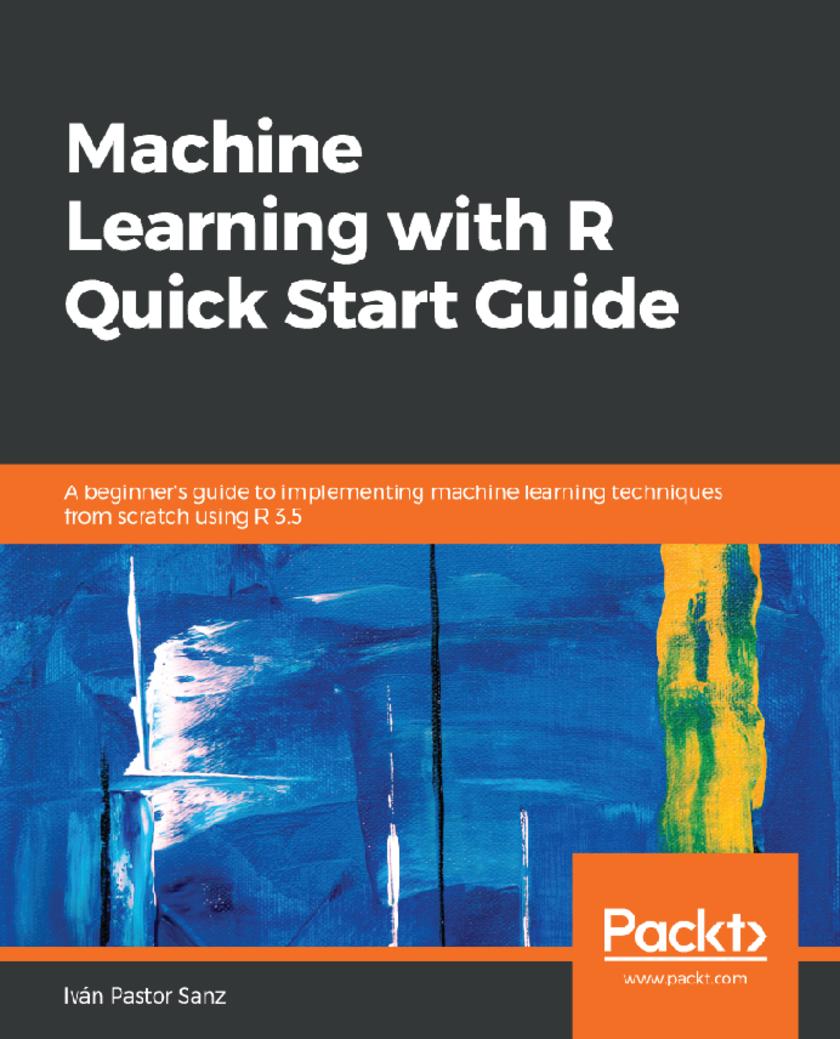
Machine Learning with R Quick Start Guide
¥54.49
Learn how to use R to apply powerful machine learning methods and gain insight into real-world applications using clustering, logistic regressions, random forests, support vector machine, and more. Key Features * Use R 3.5 to implement real-world examples in machine learning * Implement key machine learning algorithms to understand the working mechanism of smart models * Create end-to-end machine learning pipelines using modern libraries from the R ecosystem Book Description Machine Learning with R Quick Start Guide takes you on a data-driven journey that starts with the very basics of R and machine learning. It gradually builds upon core concepts so you can handle the varied complexities of data and understand each stage of the machine learning pipeline. From data collection to implementing Natural Language Processing (NLP), this book covers it all. You will implement key machine learning algorithms to understand how they are used to build smart models. You will cover tasks such as clustering, logistic regressions, random forests, support vector machines, and more. Furthermore, you will also look at more advanced aspects such as training neural networks and topic modeling. By the end of the book, you will be able to apply the concepts of machine learning, deal with data-related problems, and solve them using the powerful yet simple language that is R. What you will learn * Introduce yourself to the basics of machine learning with R 3.5 * Get to grips with R techniques for cleaning and preparing your data for analysis and visualize your results * Learn to build predictive models with the help of various machine learning techniques * Use R to visualize data spread across multiple dimensions and extract useful features * Use interactive data analysis with R to get insights into data * Implement supervised and unsupervised learning, and NLP using R libraries Who this book is for This book is for graduate students, aspiring data scientists, and data analysts who wish to enter the field of machine learning and are looking to implement machine learning techniques and methodologies from scratch using R 3.5. A working knowledge of the R programming language is expected.
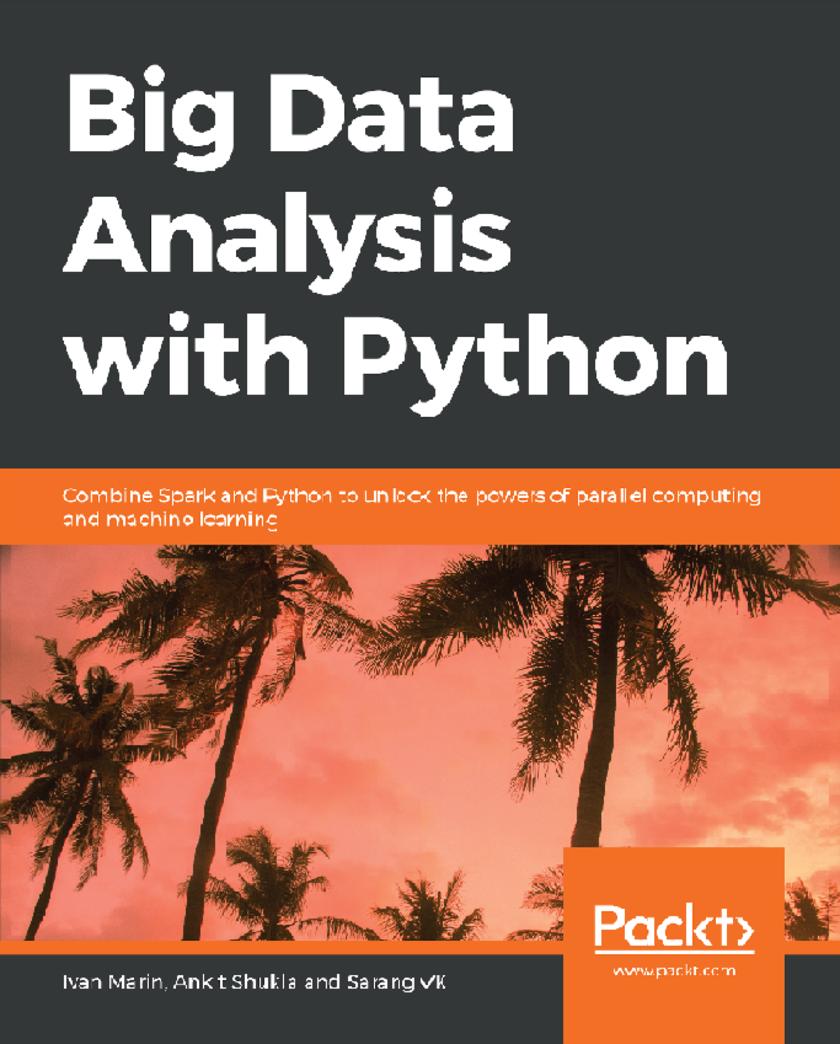
Big Data Analysis with Python
¥53.40
Get to grips with processing large volumes of data and presenting it as engaging, interactive insights using Spark and Python. Key Features * Get a hands-on, fast-paced introduction to the Python data science stack * Explore ways to create useful metrics and statistics from large datasets * Create detailed analysis reports with real-world data Book Description Processing big data in real time is challenging due to scalability, information inconsistency, and fault tolerance. Big Data Analysis with Python teaches you how to use tools that can control this data avalanche for you. With this book, you'll learn practical techniques to aggregate data into useful dimensions for posterior analysis, extract statistical measurements, and transform datasets into features for other systems. The book begins with an introduction to data manipulation in Python using pandas. You'll then get familiar with statistical analysis and plotting techniques. With multiple hands-on activities in store, you'll be able to analyze data that is distributed on several computers by using Dask. As you progress, you'll study how to aggregate data for plots when the entire data cannot be accommodated in memory. You'll also explore Hadoop (HDFS and YARN), which will help you tackle larger datasets. The book also covers Spark and explains how it interacts with other tools. By the end of this book, you'll be able to bootstrap your own Python environment, process large files, and manipulate data to generate statistics, metrics, and graphs. What you will learn * Use Python to read and transform data into different formats * Generate basic statistics and metrics using data on disk * Work with computing tasks distributed over a cluster * Convert data from various sources into storage or querying formats * Prepare data for statistical analysis, visualization, and machine learning * Present data in the form of effective visuals Who this book is for Big Data Analysis with Python is designed for Python developers, data analysts, and data scientists who want to get hands-on with methods to control data and transform it into impactful insights. Basic knowledge of statistical measurements and relational databases will help you to understand various concepts explained in this book.
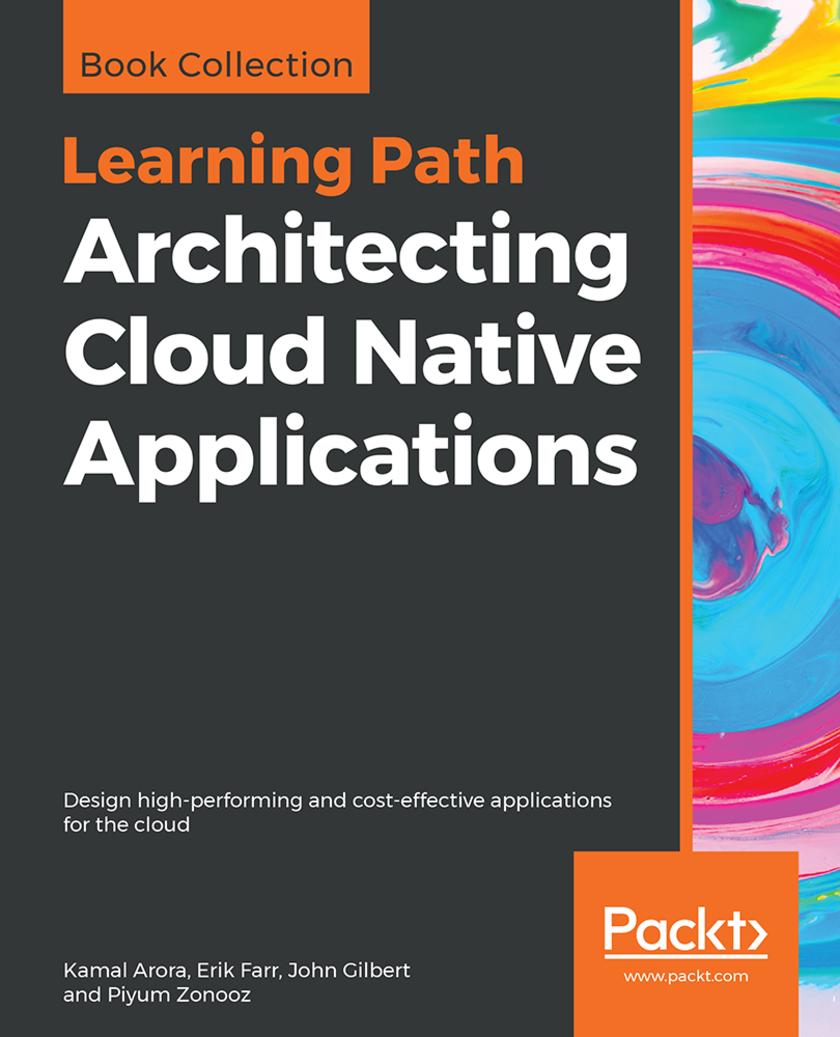
Architecting Cloud Native Applications
¥88.28
Apply cloud native patterns and practices to deliver responsive, resilient, elastic, and message-driven systems with confidence Key Features * Discover best practices for applying cloud native patterns to your cloud applications * Explore ways to effectively plan resources and technology stacks for high security and fault tolerance * Gain insight into core architectural principles using real-world examples Book Description Cloud computing has proven to be the most revolutionary IT development since virtualization. Cloud native architectures give you the benefit of more flexibility over legacy systems. This Learning Path teaches you everything you need to know for designing industry-grade cloud applications and efficiently migrating your business to the cloud. It begins by exploring the basic patterns that turn your database inside out to achieve massive scalability. You’ll learn how to develop cloud native architectures using microservices and serverless computing as your design principles. Then, you’ll explore ways to continuously deliver production code by implementing continuous observability in production. In the concluding chapters, you’ll learn about various public cloud architectures ranging from AWS and Azure to the Google Cloud Platform, and understand the future trends and expectations of cloud providers. By the end of this Learning Path, you’ll have learned the techniques to adopt cloud native architectures that meet your business requirements. This Learning Path includes content from the following Packt products: * Cloud Native Development Patterns and Best Practices by John Gilbert * Cloud Native Architectures by Erik Farr et al. What you will learn * Understand the difference between cloud native and traditional architecture * Automate security controls and configuration management * Minimize risk by evolving your monolithic systems into cloud native applications * Explore the aspects of migration, when and why to use it * Apply modern delivery and testing methods to continuously deliver production code * Enable massive scaling by turning your database inside out Who this book is for This Learning Path is designed for developers who want to progress into building cloud native systems and are keen to learn the patterns involved. Software architects, who are keen on designing scalable and highly available cloud native applications, will also find this Learning Path very useful. To easily grasp these concepts, you will need basic knowledge of programming and cloud computing.
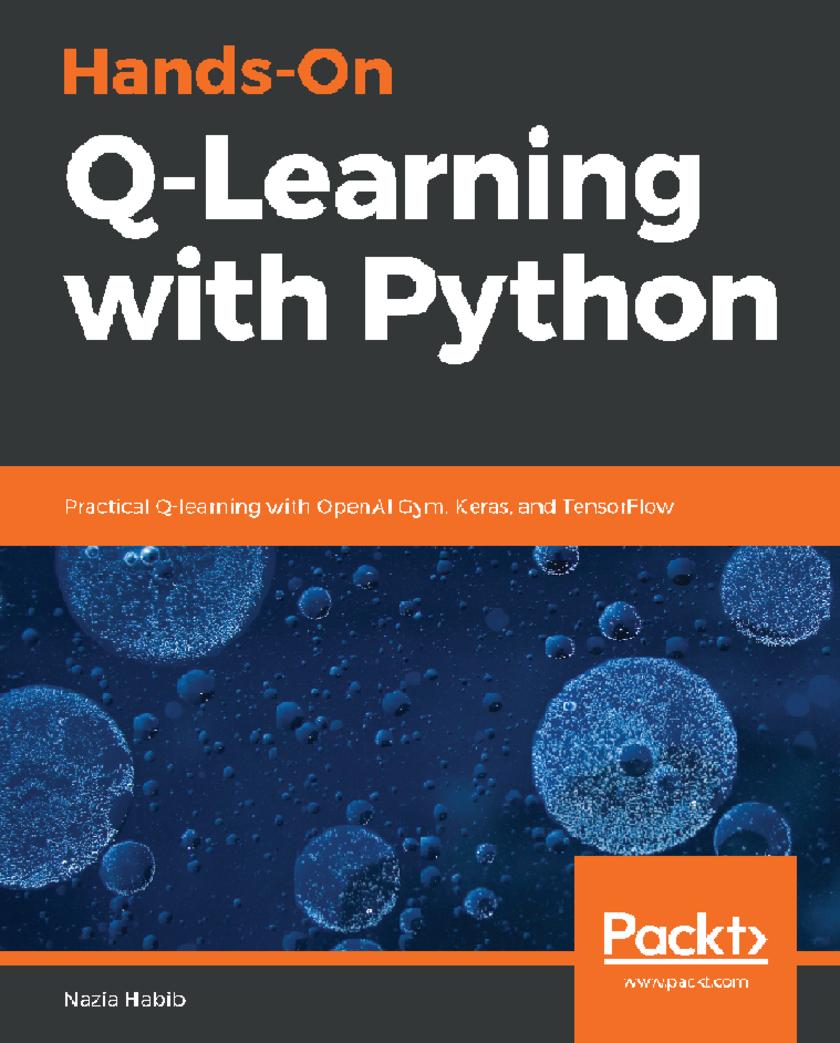
Hands-On Q-Learning with Python
¥62.12
Leverage the power of reward-based training for your deep learning models with Python Key Features * Understand Q-learning algorithms to train neural networks using Markov Decision Process (MDP) * Study practical deep reinforcement learning using Q-Networks * Explore state-based unsupervised learning for machine learning models Book Description Q-learning is a machine learning algorithm used to solve optimization problems in artificial intelligence (AI). It is one of the most popular fields of study among AI researchers. This book starts off by introducing you to reinforcement learning and Q-learning, in addition to helping you get familiar with OpenAI Gym as well as libraries such as Keras and TensorFlow. A few chapters into the book, you will gain insights into modelfree Q-learning and use deep Q-networks and double deep Q-networks to solve complex problems. This book will guide you in exploring use cases such as self-driving vehicles and OpenAI Gym’s CartPole problem. You will also learn how to tune and optimize Q-networks and their hyperparameters. As you progress, you will understand the reinforcement learning approach to solving real-world problems. You will also explore how to use Q-learning and related algorithms in real-world applications such as scientific research. Toward the end, you’ll gain a sense of what’s in store for reinforcement learning. By the end of this book, you will be equipped with the skills you need to solve reinforcement learning problems using Q-learning algorithms with OpenAI Gym, Keras, and TensorFlow. What you will learn * Explore the fundamentals of reinforcement learning and the state-action-reward process * Understand Markov decision processes * Get well versed with libraries such as Keras, and TensorFlow * Create and deploy model-free learning and deep Q-learning agents with TensorFlow, Keras, and OpenAI Gym * Choose and optimize a Q-Network’s learning parameters and fine-tune its performance * Discover real-world applications and use cases of Q-learning Who this book is for If you are a machine learning developer, engineer, or professional who wants to delve into the deep learning approach for a complex environment, then this is the book for you. Proficiency in Python programming and basic understanding of decision-making in reinforcement learning is assumed.




 购物车
购物车 个人中心
个人中心



